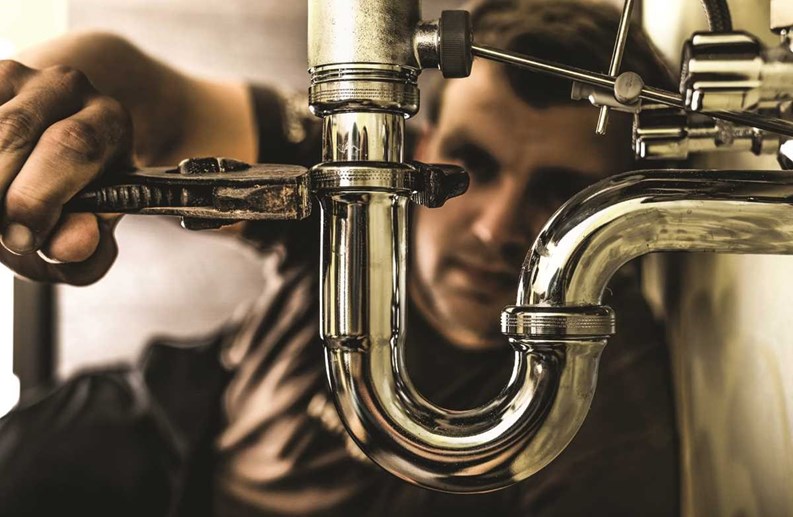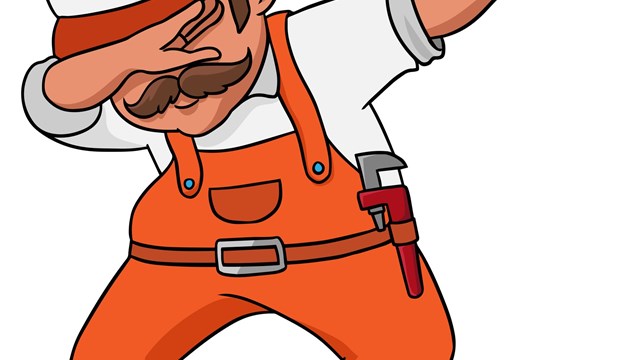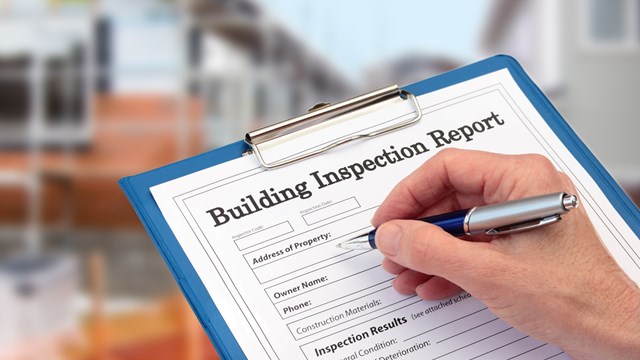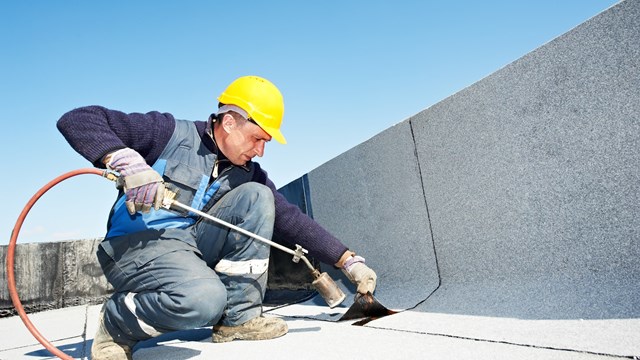Of all the modern conveniences we take for granted, perhaps none is as profoundly basic—and indispensable—as indoor plumbing. Carrying fresh water into our homes and taking waste water away, the pipes in our condo or co-op buildings are the fine line that separates us from our not-too-distant (also very aromatic and very unsanitary) urban past. When plumbing fails, it doesn’t take long to realize just how much we depend on it.
Waste Not...
Each day, more than 1 billion gallons of fresh, clean water is delivered to the taps of nine million customers throughout New York City from large upstate reservoirs—some more than 125 miles from Manhattan. Just a few generations ago however, New York City residents carried water in from wells to be used for washing, bathing and cooking. According to the New York City Environmental Protection Agency (EPA) and the Plumber’s UA Local 1 websites, it was in the 1700s, when the city’s population grew to well over 20,000, that a reservoir and wooden piping system was constructed.
It took another 50 years for a public waterworks system to be created. Initially the system was used to fight fires, and the water was pumped through cast iron piping, but it also brought usable water to residents. Some sources credit the design of New York City’s indoor plumbing system to architect Isaiah Rogers, who designed the Astor House hotel, the first hotel in New York City to have indoor plumbing.
After the Great New York Fire of 1835, a new, stronger aqueduct system was created, allowing nearly all New York City buildings to use indoor plumbing. Today, the water comes from various aqueducts in all of the Manhattan boroughs, up to the Hudson Valley and Catskill regions. The EPA reports that the water system includes 19 reservoirs and three controlled lakes, with a total storage capacity of approximately 580 billion gallons.
Modern Materials
Today, the cast iron piping is gone and, according to Bob Bellini, president of Varsity Plumbing & Heating Inc. in (where else?) Flushing, water distribution systems are now made predominantly of copper. “Copper piping is faster, easier and lasts longer,” he says.
Plastic piping has also become more popular over the last few years, mostly because of its affordability factor, but Bellini says you won’t find any being used in New York City plumbing systems. “It all comes down to city building code, and the New York City code doesn’t allow for that,” he says. “Plastic piping also won’t withstand the high water pressure of a taller building and, should it burn, gives off noxious fumes that will spread.”
Indoor plumbing has come a long way from the days of carrying buckets of well water, but bringing water to the residents of a multifamily building is much different compared to a single family home. It also comes with its own set of challenges.
“Residents commonly complain about water temperature, leaks, blockages, stoppages and low water pressure,” says Harris Clark, a master plumber with Sanitary Plumbing & Heating Corp. in the Bronx.
In a single-family home, if the water is too hot or too cold, residents can simply adjust the temperature of the water heater. “In a multifamily building, everybody is going to get the same water temperature, because it’s one giant piece of equipment serving, say, 200 units. You can’t set the water temperature to meet everyone’s needs.”
The plumbing in multifamily buildings works in a “very similar fashion” to a single-family home with the exception that you have to get water to the upper floors, says Phil Kraus, president of Manhattan-based Fred Smith Plumbing & Heating Inc. The street pressure, he notes, which would be suitable for a single- or two-family residence, but it is not adequate for multifamily buildings, especially if you live above six stories. Therefore, you would need a pump of some kind to bring water to the upper floors. Most buildings, also have hot water recirculation lines so that the water running through the risers is warm at all times, so residents don’t have to wait to get their hot water.
Living in a New York City penthouse apartment is a luxury reserved primarily for the rich and sometimes famous, but when it comes to buying a great place with decent water pressure, the elite may want to reconsider going the lofty route. Since many high-rise buildings use a gravity-style plumbing system, “If you’re in a large building and you live at the top, gravity is what feeds the water to your apartment,” says Bellini. “Typically there isn’t enough pressure. You may have a $10 million dollar apartment but you’re only getting 10 to 15 pounds of pressure.”
To rectify low pressure issues, auxiliary pressure booster systems—housed in the iconic wooden tanks that characterize the New York City skyline—are often installed on building rooftops. “These wooden tanks pump water from the roof to the ground and back up again,” says Bellini. “They create their own pressure.”
Finding & Fixing
Durable as they are, pipes do eventually show their age, and all the water pressure pushing through them means that sooner or later, they will develop leaks. Other issues, like corrosion, and residents flushing inappropriate things down toilets and drains also leads to breakdowns and malfunctioning.
Finding the source of leaks is notoriously tough. “Sometimes it’s difficult to trace where it's coming from,” says Clark. “Did it start in the basement or five floors up? Is it on the west side of the building, or is it going across the beams and down two flights on to the east side of the building?”
Unfortunately leaks aren’t something that can be totally prevented. “In the plumbing world, you don’t fix something unless it’s leaking,” says Bellini. “However, it is very important to get leaks under control right away, because we’ve learned a lot about mold in recent years. The more a pipe leaks, the more of a health issue it can be—so you must have a good communication system to report leaks as soon as they happen. ”
Kraus agrees that the top plumbing complaints are related to leaks or some kind of faucet repair. “There isn’t a lot of preventative maintenance done on plumbing lines,” he says. “ Most of the time if there is a leak you repair it. Though, if you have a chronic problem or more than one problem, people tend to want to know why. Do you replace the piping before it leaks or is there perhaps something wrong with the construction of the building?” he asks. He adds that there are a number of problems that could surface but no one answer can suffice if the problem keeps reoccurring.
According to the EPA, water leaks should be cleaned up within 24 to 48 hours of when they happen to prevent mold growth. “Don’t let things fester,” warns Clark. “If your super tells you there’s a leak somewhere, it’s only going to get worse—not better. Your bylaws will say who’s responsible for what repairs, but the general rule is what’s inside the wall is the building’s responsibility, while outside is the shareholder’s responsibility—but individual buildings may deviate a little.”
Leaks are annoying and, if not fixed, can lead to mold and other potential damage. However, nothing is more disruptive and uncomfortable for residents than stoppages and blockages, especially if it causes a neighbor’s water to back up into their unit. “There are a lot of variables as to what is causing blockages,” says Stuart Liben, president of New York City Plumbing & Heating Inc. in Manhattan. “Depending on the age of the building and the piping, it might be harder for the water to flush down.”
Unlike if-it-ain't-broke-don't-fix-it water pipes, sewer systems can definitely be maintained. “Have a plan to routinely clean them with a sewer machine,” says Bellini. “You are trying to get buildup out of there, so you’re less likely to have a backup.”
There are other steps you can take to care for the plumbing system, too. “When you are renovating, make sure any exposed piping is checked—and replaced if necessary,” says Liben, who goes on to explain that however competent and knowledgeable your in-house staff may be, professional licensed plumbers are more familiar with the intricacies of a building’s water supplying and waste removal systems. “Note the age of your hot water heaters, and make sure you have anti-flood devices that will shut the water down if there was a leak. For washing machines, make sure hoses are checked regularly, and that they also have a flood stop mechanism that shuts the water down.”
Bring in the Professionals
Just remember that supers aren’t plumbers, so call in the professionals when necessary. “Legally, the supers shouldn’t be doing much,” says Clark. “They can work on the faucets, sometimes, but they shouldn’t be doing major repair work—which is anything that falls under the municipal plumbing code.”
In addition to city regulations, professional plumbers must also be well-versed in the newest backflow preventer regulations. “It’s a device that’s installed by a licensed installer on the water main coming into the building,” says Bellini. “It’s mandated for certain by the state sanitary code and enforced by the Department of Environmental Protection. It prevents the water from any commercial or residential property from back flowing into the city or sewer main.”
According to the city’s EPA, backflow devices prevent contaminated water or chemicals from flowing back into the drinking water supply if there is a sudden or unexpected change in water pressure. If a property requires a backflow prevention device, they must be installed on all water service lines to the property.
Technology and improved equipment has helped the plumbing field advance, Kraus says. “I’ve been in business since the 1970s, and when I came into it we couldn’t use copper pipe, it was galvanized for brass pipe for the water lines. So the materials have changed quite a bit and some of the equipment today is quite sophisticated. Now you have digital controls for pumps in the basement and on top of the building. You have digital controls for the heating equipment. The materials have changed the way you control things. You don’t screw pipes together, you sodder them. Fittings clamp together.”
And, says Kraus, depending on the job, there can be a cost savings depending on the techniques you use. Today you have thermo-imaging devices, which can direct you to an area, and show you different temperatures, that helps you locate where the leaks originate. Remote cameras can also be put down pipes and waste lines to detect problem areas, he says.
Pigeon Surprise
The work of a plumber might seem straight-forward—fix a leak or unstop a clog—but depending what’s behind the cause of the leak or the stoppage, plumbers might have some interesting stories to tell.
“The problem is that many doors on roof tanks are not fully sealed or are missing,” says Bellini. “Pigeons will nest in there to get out of the weather. One day we got a phone call from a building that had no water. The tank was full, but the water wasn’t flowing out of the tank. We suctioned out all of the water out of the main line and found a dead pigeon carcass blocking the water from going to the rest of the building. It’s so important to make sure the tank structure on the roof is maintained.”
In a tongue-in-cheek tribute to his work, Clark says, “It’s a crapshoot as to whether or not we’ll find something unusual,” he says “We’ll find engagement rings, kids’ toys, makeup and anything that can fit down a toilet.”
A good rule of thumb, says Kraus, is to always use a licensed professional. If you’re repairing a toilet or a faucet, a handyman might be able to do it but they need a particular skill set to do it right, he says. And there is liability regarding leaks, should a super or handyman complete a repair improperly.
As with any system, the key to good plumbing is maintenance and repair. Take care of the system before something happens. This will avoid unnecessary grief later on, especially when residents are complaining. A simple leak that isn’t taken care of can cause a tremendous amount of damage to the unit and the co-op or condo building.
Lisa Iannucci is a freelance writer and a frequent contributor to The Cooperator.







Leave a Comment